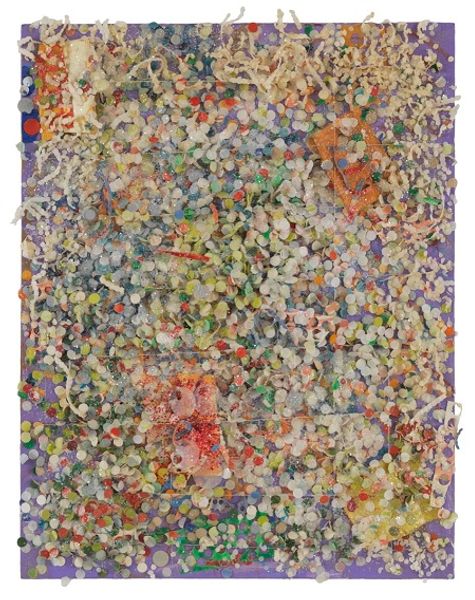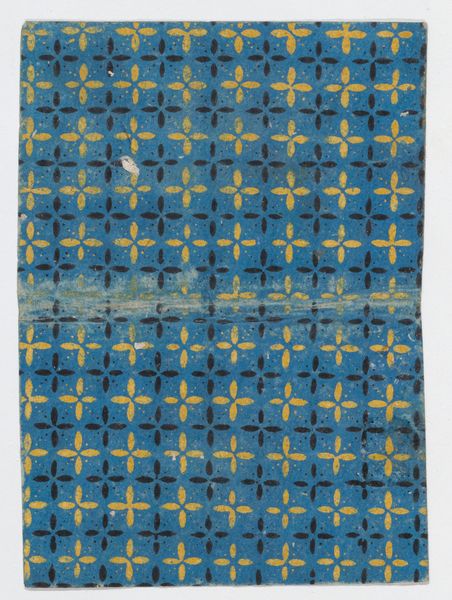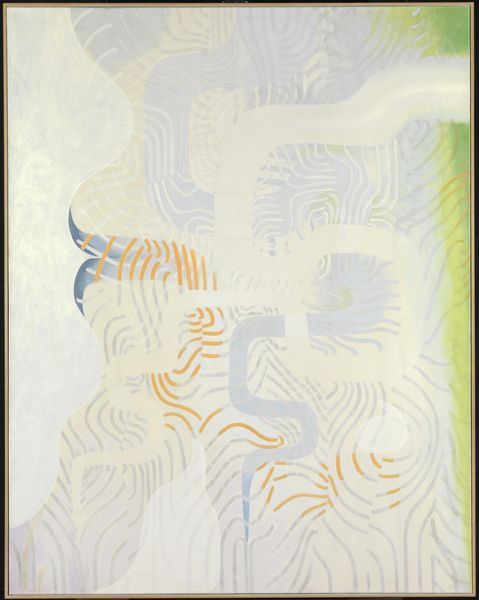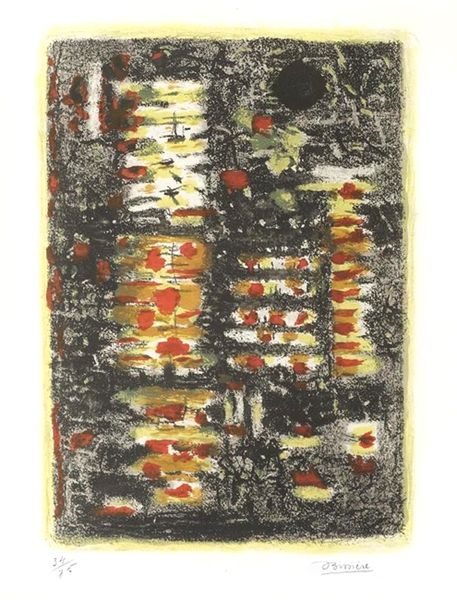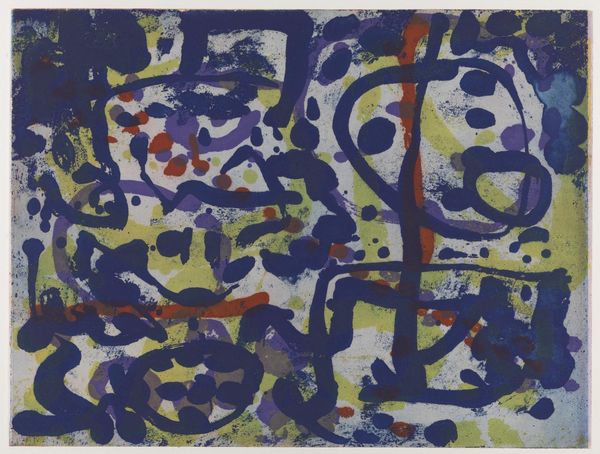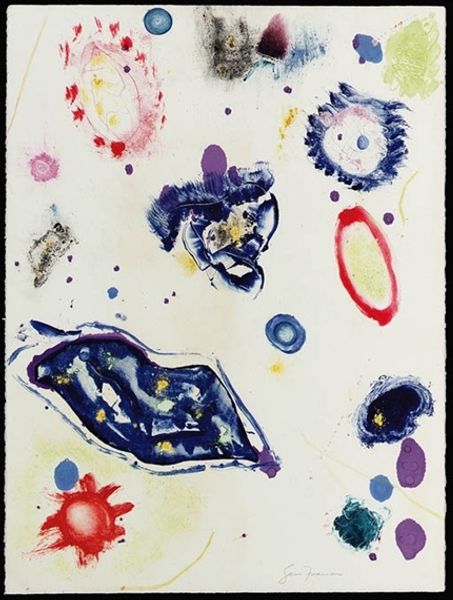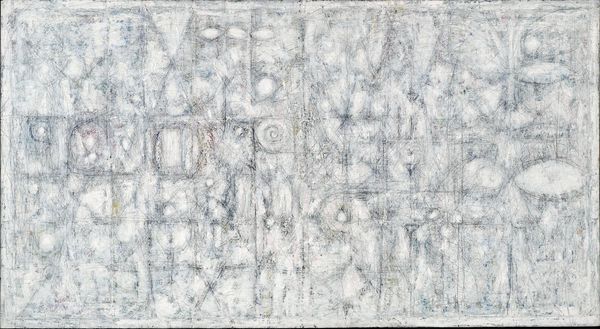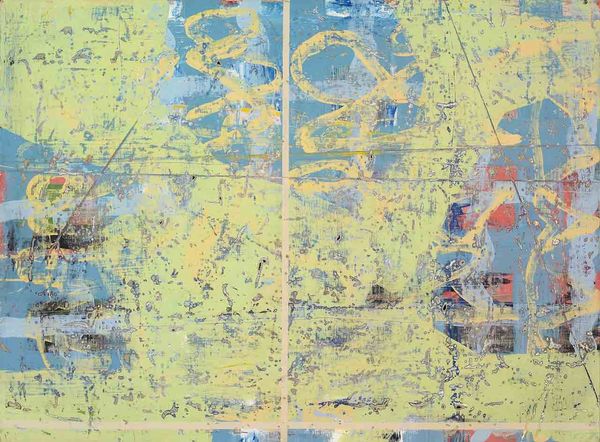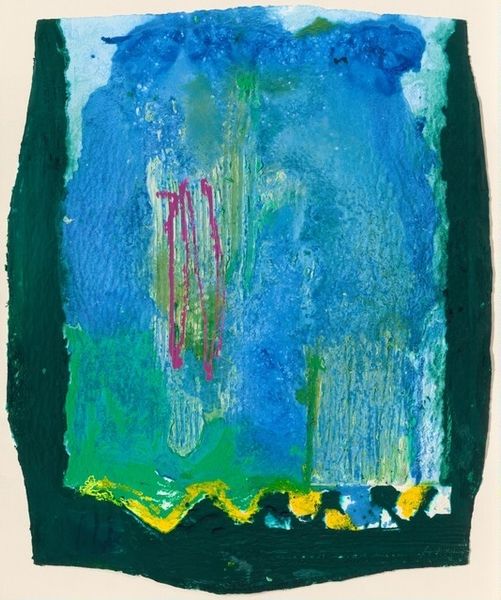
watercolor
#
abstract-expressionism
#
organic
#
water colours
#
watercolor
#
organic pattern
#
abstraction
#
watercolor
Dimensions: 28.2 x 22.8 cm
Copyright: Manuel Cargaleiro,Fair Use
Editor: Here we have Manuel Cargaleiro’s "Sem Título," or "Untitled," from 1967, rendered in watercolor. It’s a busy piece, almost like a dreamscape made of colorful fragments. What do you see in this work? Curator: It’s fascinating to consider this work within the context of 1960s Portugal. While the dictatorial regime suppressed dissent, artists often found ways to express themselves through abstraction. Do you see how Cargaleiro uses these seemingly random forms and colors? Editor: I guess they could represent…coded messages? Or maybe it’s a reaction to the strict order imposed by the government, a visual rebellion in a way? Curator: Precisely! Abstraction offered a space for commentary without being explicitly censored. Think about the role of the Gulbenkian Museum itself at the time – was it a space of true artistic freedom, or a curated representation of what was deemed acceptable? Editor: That’s a really good point. It makes me wonder about the power dynamics within the art world, and how institutions can both support and constrain artistic expression. It also highlights the value that abstract work holds by being implicitly expressive. Curator: And notice how the “organic pattern” blurs the lines between representation and pure form. Does it evoke any specific feeling or environment for you? It prompts the audience to question what art *should* express in constrained socio-political climates, and how successful Cargaleiro was at pushing this boundary. Editor: I can almost feel the movement and the energy, as though I am staring out on a city or perhaps down on water in nature, depending on my mood. The loose composition makes the viewer feel invited and allows freedom of interpretation. Curator: A freedom perhaps not afforded in the streets of Lisbon at the time. Very perceptive. Considering this painting as a product of its specific time and place certainly deepens our understanding. Editor: Absolutely. I’ll never look at abstract art the same way again, without thinking about the cultural forces at play. Thank you for bringing that to light!
Comments
No comments
Be the first to comment and join the conversation on the ultimate creative platform.
